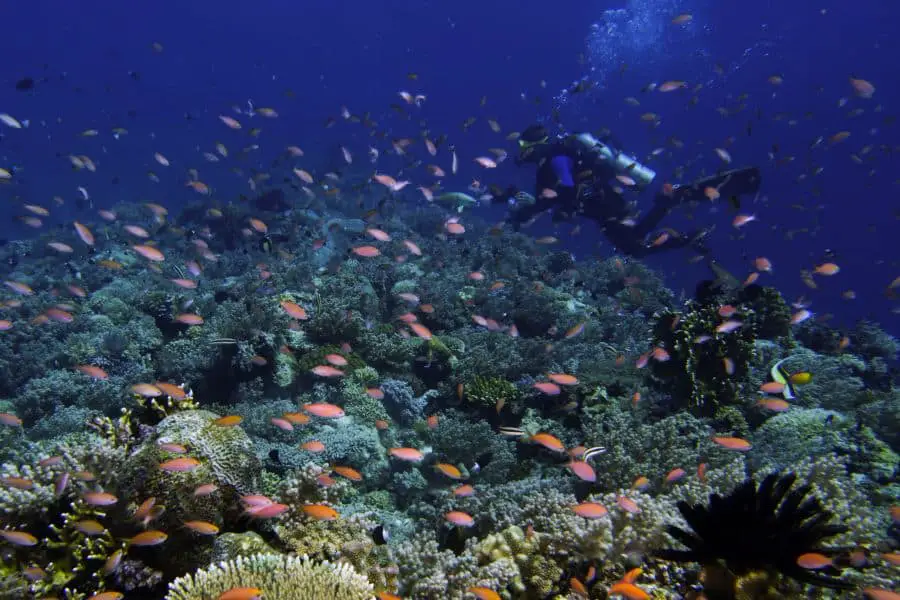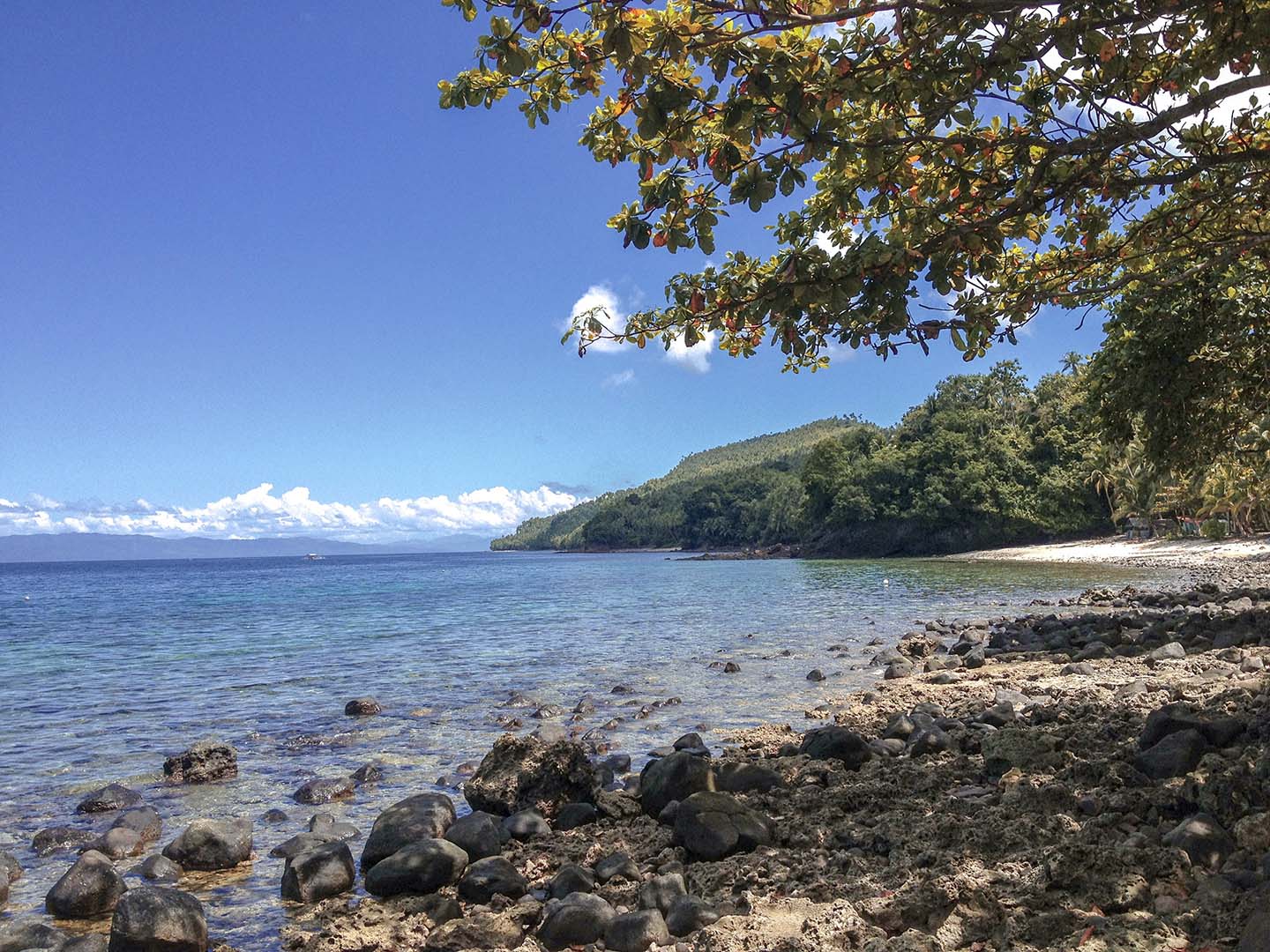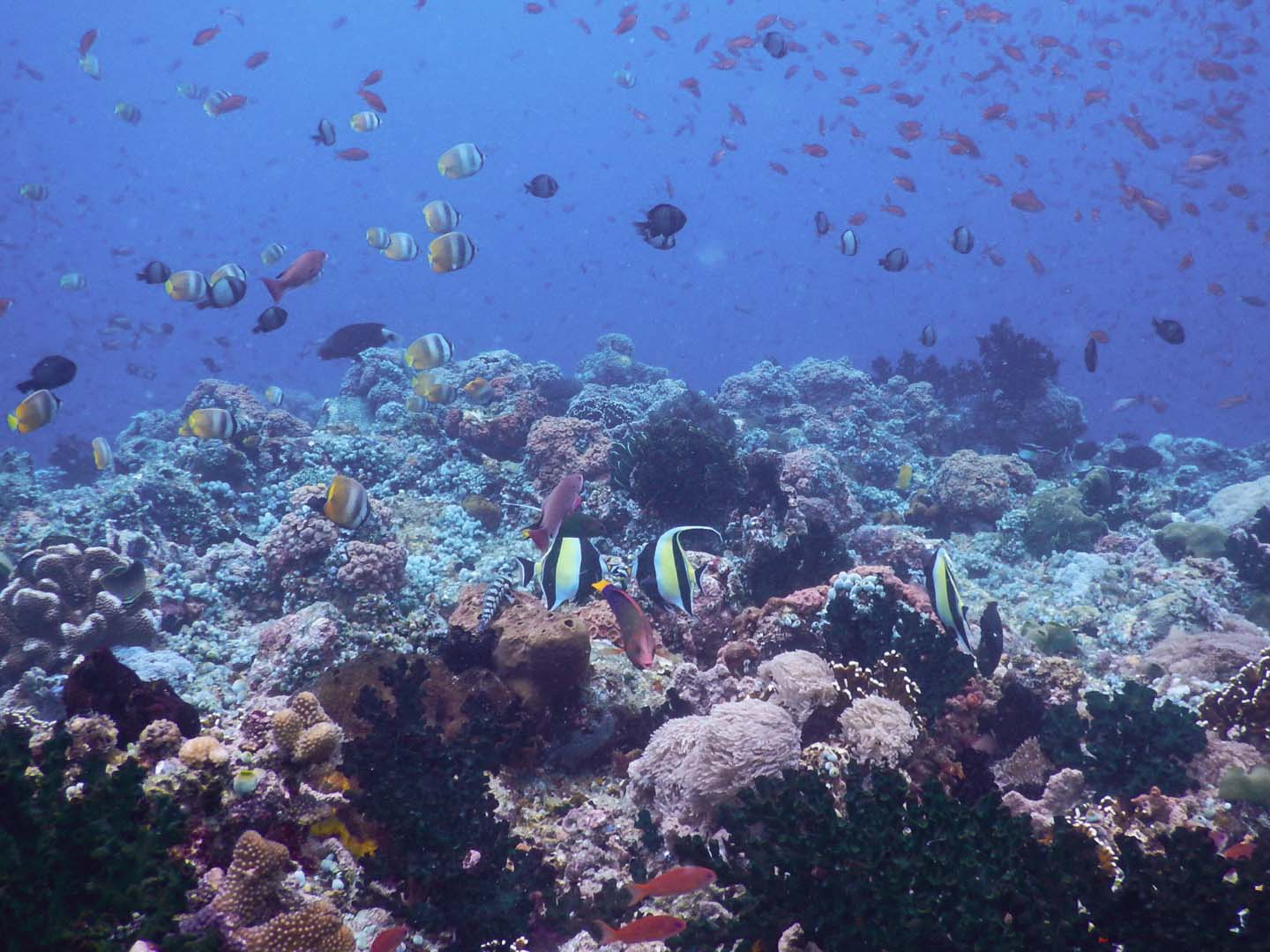Nestled in Southeast Asia, between the South China and Philippine Seas, the Philippine Archipelago is a breathtaking tropical haven. With over 7641 islands stretching across approximately 1850 km (1150 miles) from north to south, this diverse paradise boasts an impressive array of marine life and stunning dive sites.
Seated in the Coral Triangle, the Philippines is a global biodiversity hotspot. Its waters are teeming with vibrant coral reefs, seagrass meadows, and mangrove forests that provide habitats for a myriad of marine creatures. Whether you’re a beginner or an experienced diver, the country offers a wide range of dive sites suitable for all skill levels.
One of the remarkable aspects of diving in the Philippines is its year-round appeal. With relatively stable water temperatures and excellent visibility, there’s always an opportunity to discover and explore. However, each month brings its own unique highlights and regional variations, making it even more exciting to plan your diving adventures.
In this post, you’ll learn the best time to dive in the Philippines and a month-by-month recommendation of where you should go. I have gone scuba diving in all of these places myself so I am confident that you will enjoy these dive spots in the Philippines.
- When is the best time to go diving in the Philippines?
- Where to scuba dive in the Philippines in January
- Where to scuba dive in the Philippines in February
- Where to scuba dive in the Philippines in March
- Where to scuba dive in the Philippines in April
- Where to scuba dive in the Philippines in May
- Where to scuba dive in the Philippines in June
- Where to scuba dive in the Philippines in July
- Where to scuba dive in the Philippines in August
- Where to scuba dive in the Philippines in September
- Where to scuba dive in the Philippines in October
- Where to scuba dive in the Philippines in November
- Where to scuba dive in the Philippines in December
When is the best time to go diving in the Philippines?
The Philippines is a fantastic destination for scuba diving at any time of the year; however, the best time to go diving may vary depending on the location of the Philippines that you intend to visit. In most cases, there are two distinct seasons to take into account: the dry season and the rainy season. This is also locally known as the habagat and amihan seasons.
The months of November through May, which coincide with the dry season in the Philippines, are widely regarded as the prime time for scuba diving. During this time, the weather is typically clear and sunny, and the seas are calm, creating ideal conditions for scuba diving thanks to the superb visibility.
The rainy season in the Philippines stretches from June until October and is characterized by heavier rainfall as well as the possibility of typhoons. Even though the weather may be less dependable during this time of year, the country continues to draw divers from all over the world due to its abundant marine life.
The ideal time to go scuba diving in the Philippines is going to depend on your own preferences as well as the particular dive locations you have in mind. Also, bear in mind that some marine life in the Philippines will have seasons as well.
Where to scuba dive in the Philippines in January
If you want to go diving in the Philippines in January, I recommend exploring Bohol.
Located in the central Visayas region, Bohol is well known for its Chocolate Hills and the tiniest primates in the world called tarsiers. But for me, I associate this to world-class diving that can be found in Panglao Island, Balicasag Island, and Pamilacan Island.
Panglao Island situated just off Bohol’s southwest coast, is a diver’s paradise. Its crystal-clear waters and vibrant coral reefs are home to an abundance of marine life. Just in front of Alona Beach, reveals breathtaking coral gardens teeming with colorful reef fish, nudibranchs, and more.
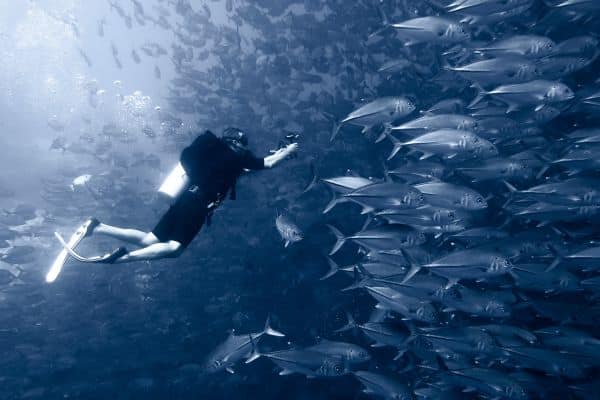
A short boat ride from Panglao Island, Balicasag Island is a must-visit destination. This marine sanctuary boasts of dramatic drop-offs, sea turtle encounters, schools of jackfish, and barracudas.
For another extraordinary experience, head to Pamilacan Island. The island’s waters also harbors sea snakes, colorful reef fish, seahorses, and nudibranchs. And if you’re lucky, you may encounter a pod of dolphins or whale sharks on the way.
To reach Bohol, you can fly to Tagbilaran Airport on the island or take a ferry from nearby islands like Cebu. From Tagbilaran City, Panglao Island is easily accessible by land transportation. Local dive operators can arrange boat trips to Balicasag Island and Pamilacan Island.
Where to scuba dive in the Philippines in February
Sogod Bay is located in the province of Southern Leyte, in the Eastern Visayas region of the Philippines.
One of my favorite dive site to visit in Sogod Bay is Napantao Marine Sanctuary. It features a vibrant coral garden and a wide array of fish species, including barracudas, snappers, and groupers. Divers can explore the thriving underwater world and witness the conservation efforts in place.
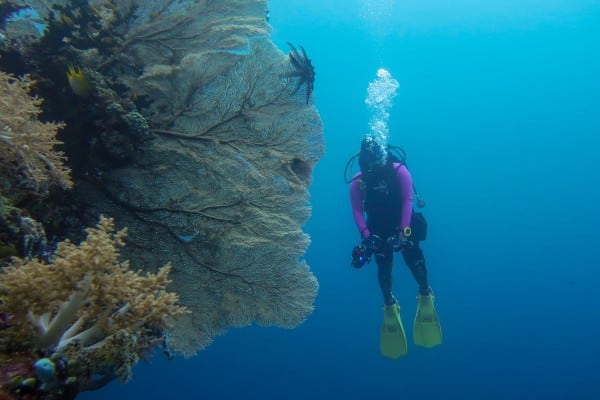
Night Diving at Padre Burgos Pier is one of the best night dives I’ve done in the Philippines. This bustling pier becomes an exciting playground for nocturnal marine creatures after sunset. Night diving here offers a unique opportunity to observe fascinating critters, such as octopuses, shrimps, and other nocturnal creepy crawlies.
Limasawa Island is also a fantastic island to visit for diving vibrant coral formations, steep walls, and beautiful coral gardens.
From December to May, Sogod Bay offers the chance to embark on sustainable whale shark snorkeling tours. These gentle giants can be encountered in their natural habitat, allowing for awe-inspiring and responsible wildlife interactions.
To reach Sogod Bay, you can fly to Tacloban Airport in Leyte and then take a land transfer to Padre Burgos. From there, dive resorts and operators can arrange boat transfers to the dive sites.
Where to scuba dive in the Philippines in March
If you want to scuba dive in the Philippines in March, you should consider going to Coron.
Located in the Calamian Islands of Palawan, Coron is famous for its remarkable collection of World War II Japanese shipwrecks. This wreck diving paradise in the Philippines, have evolved into spectacular artificial reefs teaming with marine life. Explore famous wrecks such as the Irako Maru, Okikawa Maru, and Olympia Maru.
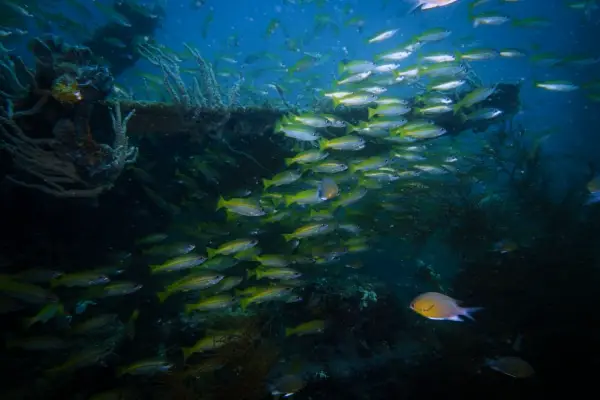
Also, don’t pass up the chance to dive in Barracuda Lake, where you can experience both thermocline and halocline while scuba diving. Keep a look out for the curious barracuda that call this place home.
Visit neighboring Calauit Island where you can dive with dugongs. This is one of the few places where you can interact with sea cows in the Philippines.
Coron may be reached by flying to Francisco B. Reyes Airport (Busuanga Airport) from major Philippine cities. You can take a bus or a boat from Busuanga to Coron town, where most dive operators are located.
Where to scuba dive in the Philippines in April
If you’re planning a diving trip to the Philippines in April, I highly recommend the captivating destination of El Nido.
Also located in Palawan, El Nido is renowned for its stunning limestone cliffs, white sand beaches and turquoise waters. While most people visit El Nido for island hopping tours to visit places like like Big Lagoon and Small Lagoon, you can also go scuba diving in Bacuit Bay.
Prepare to encounter an array of marine creatures, including sea turtles, an assortment of tropical fish and various macro critters.
One of the must-visit dive sites is the Helicopter Island Tunnel, where you can explore an underwater cavern that passes through the island. Another noteworthy site is South Miniloc, famous for its cabbage coral patch with schooling yellow snappers.
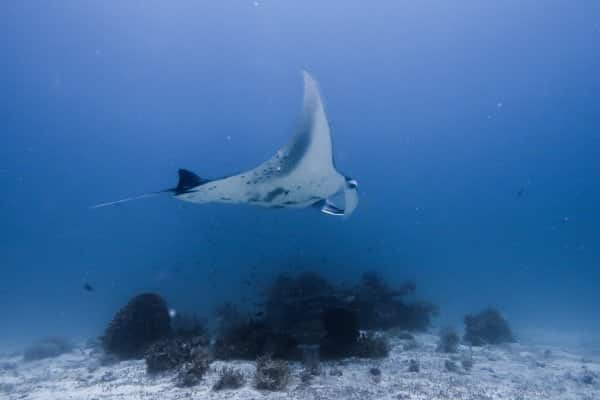
Another highlight of diving in El Nido is the opportunity to visit Sibaltan to dive with manta rays. Witness the grace and elegance of these majestic creatures as they visit cleaning stations, allowing small fish to remove parasites from their bodies.
To reach El Nido, fly to Puerto Princesa from major cities in the Philippines. From there, you can take a van to El Nido town, where most dive operators are based. Another option is to take a ferry from Coron.
Where to scuba dive in the Philippines in May
If you’re planning a diving trip to the Philippines in May, I highly recommend exploring Tubbataha Reefs Natural Park.
Located in the Sulu Sea, this UNESCO World Heritage Site is a diver’s paradise and offers an unparalleled underwater experience.
Tubbataha Reefs Natural Park boasts extraordinary marine biodiversity, with more than 600 species of fish, including butterflyfish, groupers, snappers, anthias, triggerfish, and more. You can also encounter 11 species of sharks, such as hammerheads, whitetips, and blacktips, adding a thrilling element to your dives. The park is also frequented by dolphins, whales, and sea turtles, with sightings of spinner dolphins, bottlenose dolphins, and green turtles being common.
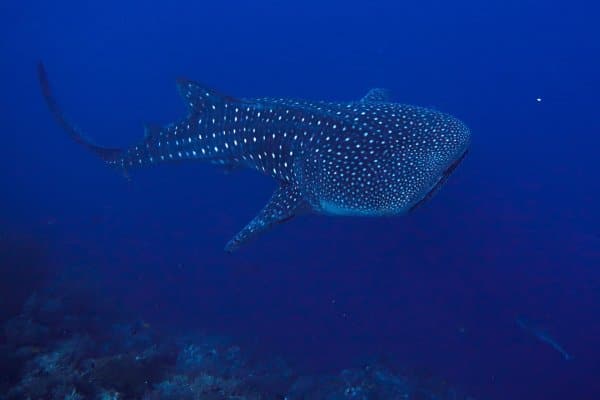
Divers can only access the marine park from mid-March to mid-June. Tubbataha liveaboard vessels offer multiple dives per day, allowing you to explore the park’s diverse dive sites and maximize your time in this pristine marine sanctuary.
To reach Tubbataha, you can fly to Puerto Princesa, the capital of Palawan, which serves as the gateway to the park. From there, you can join a liveaboard trip departing from Puerto Princesa or other nearby ports.
Read my Tubbataha experience on board MV Resolute.
| https://www.diverbliss.com/liveaboard-packing-list/ |
| https://www.diverbliss.com/liveaboard-diving-for-beginners/ |
Where to scuba dive in the Philippines in June
Located on the island of Negros Oriental, Dauin offers a fascinating underwater world that will captivate divers of all levels.
If you want to go diving in the Philippines in June, you can check out Dauin which offers a broad choice of diving sites that appeal to both macro and coral reef enthusiasts.
Dauin is well-known for its superb muck diving areas, where you may see an amazing variety of macro creatures, like nudibranchs, seahorses, pipefish, sea snails, crabs, shrimp, and cephalopods. Dauin is a top choice among scuba divers and underwater photographers who love critter hunting.
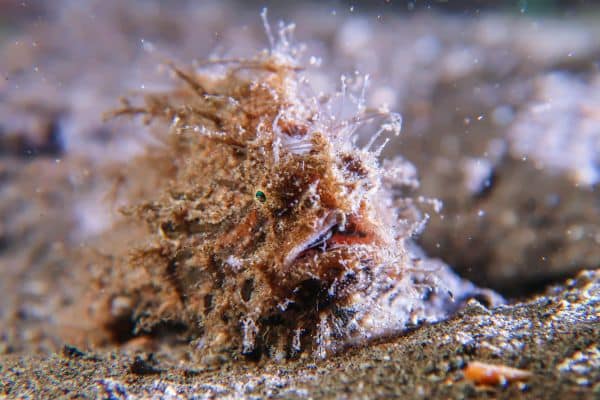
For people who love coral reef diving, Apo Island is just a 45-minute boat ride from Dauin. This island was once a struggling fishing village facing declining fish stocks and deteriorating coral reefs but in the early 1980s, a portion of the island was established as a marine sanctuary and implemented strict fishing regulations, including banning destructive fishing practices. This marked the beginning of a remarkable turnaround for Apo Island’s ecosystem. Over the years, the marine sanctuary has flourished, and the coral reefs have rebounded, becoming a haven for marine life.
In the neighboring town of Zamboanguita, you can also find dive sites with beautiful soft and hard corals. This area is also home to Marine Conservation Philippines. For those seeking ocean conservation volunteer opportunities in the Philippines, I highly recommend checking MCP.
To get to Dauin, fly to Dumaguete City in Negros Oriental and take a short drive to Dauin.
While in the vicinity, I recommend visiting the charming province of Siquijor which is a ferry ride away from Dumaguete. Siquijor Island not only offers diving but also magnificent beaches and waterfalls to explore.
Where to scuba dive in the Philippines in July
For an exceptional diving experience in July, look no further than Anilao, Philippines. Situated in the Batangas province, Anilao offers a diverse range of dive sites and unforgettable underwater encounters.
With more than 50 dive sites to choose from, Anilao is an ideal destination for divers of all levels. Whether you’re a beginner or an advanced diver, you’ll find something to suit your interests. Macro enthusiasts will be thrilled by the abundance of critters that call Anilao home, including colorful nudibranchs, fascinating seahorses, and camouflaged octopuses.
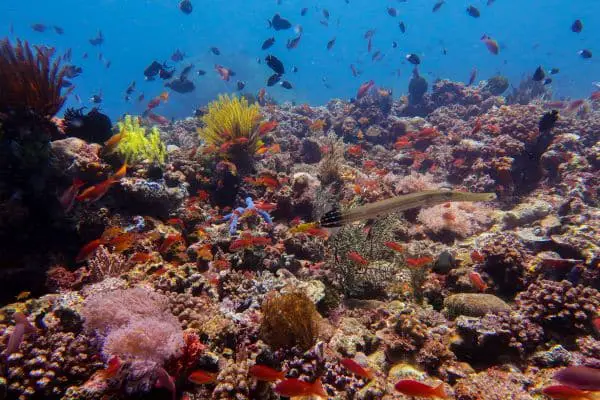
The coral reefs in Anilao are a spectacle to behold, boasting a wide array of vibrant marine life. Swim among schools of tropical fish, encounter graceful sea turtles and marvel at the intricate coral formations. For those seeking more adventure, Anilao offers opportunities for wreck diving, deep dives to explore underwater pinnacles, and stimulating night dives.
July is also PADI Women’s Dive Day and several resorts in Anilao organize dive events during this time. This is the perfect venue to meet new dive buddies.
To reach Anilao, you can fly to Manila, the capital city of the Philippines. From there, it’s a scenic two to three-hour drive to Anilao, or you can arrange for a private transfer or take a local bus.
Where to scuba dive in the Philippines in August
If you’re an avid underwater photographer and seeking a unique diving experience in August, I highly recommend exploring the hidden gem of Romblon in the Philippines.
Nestled in the heart of the Sibuyan Sea, Romblon offers a paradise for super macro diving and black water diving, making it a favorite destination for underwater photography enthusiasts.
Romblon’s pristine waters are teeming with diverse marine life, from tiny critters to fascinating creatures of the deep. The super macro opportunities here are unparalleled, with the chance to capture intricate details of nudibranchs, seahorses, pipefish, shirmps, crabs, cephalopods, and other minuscule marine species.
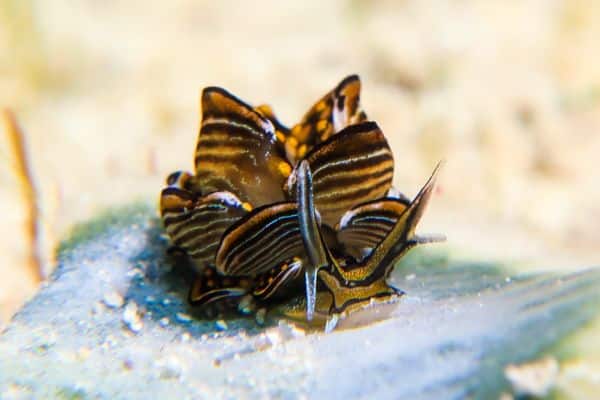
Blackwater diving in Romblon should not be missed by thrill-seeking divers. It involves venturing into the depths of the ocean during the night to witness the vertical migration of planktonic creatures. As you descend into the dark abyss, you’ll encounter a mesmerizing array of jellyfish, crustaceans, and other fascinating marine species that rise to the surface from the deep sea.
What also sets Romblon apart is its off-the-beaten-path charm. Away from the crowds, you can immerse yourself in the untouched beauty of this hidden paradise.
To reach Romblon, you can fly to Manila, the capital city of the Philippines. From Manila, you can take a domestic flight to Tablas Airport then take a boat ride to Romblon Island.
Protip: If you’re diving in Anilao, you can also take an overnight ferry from Batangas Port to Romblon Island.
Where to scuba dive in the Philippines in September
If you want to go diving in the Philippines in September, consider going to Puerto Galera in Oriental Mindoro. This stunning location offers a multitude of dive sites that cater to divers of all levels, ensuring an unforgettable underwater experience.
The Canyons is quite popular due to the ripping currents, spectacular rock formations and enormous schools of fish that can be found there. Hole in the Wall provides visitors with an exciting opportunity to swim through short and narrow underwater passage covered in corals and sponges. Montani is a favorite muck diving location for divers searching for critters like seahorses, flamboyant cuttlefish, and frogfish.
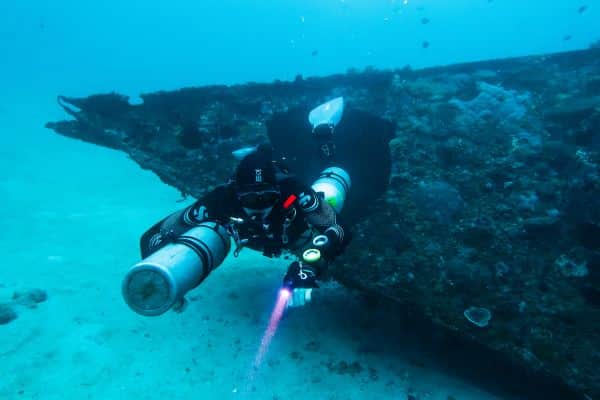
Just a short boat ride away from Puerto Galera, Verde Island is a must-do for avid divers. It is renowned as one of the world’s most biodiverse dive sites.
To reach Puerto Galera, you can fly to Manila and then take a bus or private transfer to Batangas Port. From there, a ferry or speedboat ride will transport you to Puerto Galera.
Where to scuba dive in the Philippines in October
If you’re planning a diving trip to the Philippines in October, I highly recommend going to Moalboal in Cebu. This charming coastal town offers a variety of underwater wonders that will leave divers in awe.
The Sardine Run in Moalboal draws visitors from all over the world to see millions of sardines congregate in whirling schools. Just a stone’s throw away from Panagsama beach, you can dive with the school of sardines whole year round. that will take your breath away.
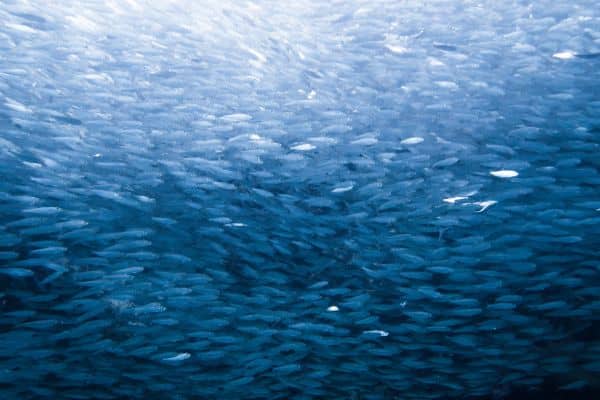
Additionally, Moalboal is one of the best places in the Philippines to dive with sea turtles. These graceful creatures are commonly encountered during dives, offering incredible opportunities for up-close interactions.
Another unique experience in Moalboal is witnessing the mating dance of mandarin fish during a dusk dive. These colorful fish engage in a mesmerizing display of courtship, creating a magical underwater spectacle.
For further exploration, nearby Pescador Island is a must-visit dive site. It features stunning coral formations, vertical walls, and the chance to encounter a wide variety of marine life, including schools of fish, reef sharks, and even occasional sightings of whale sharks.
To reach Moalboal, you can fly to Mactan-Cebu International Airport and then take a land transfer to the town. The journey takes approximately two to three hours, but the stunning coastal scenery along the way makes it worthwhile.
Where to scuba dive in the Philippines in November
For scuba diving in the Philippines in November, you can check out Malapascua Island in Cebu. This tiny island in northern Cebu is known for thresher sharks encounters.
Malapascua is one of the few locations in the world where thresher sharks are spotted almost on a daily basis. These beautiful animals are commonly seen at Monad Shoal and Kimud Shoal. The dive site serves as a cleaning station for the sharks. In recent months, tiger shark sighting has also been prolific in the area.
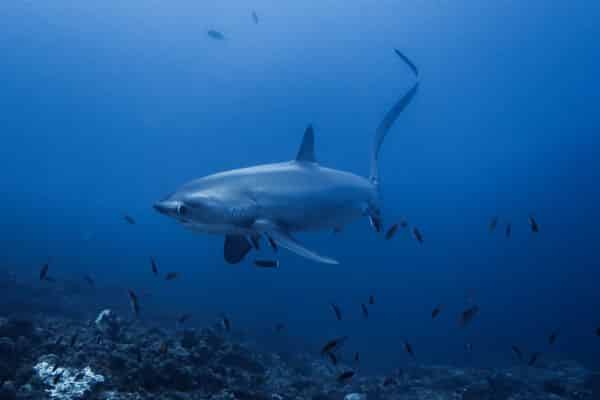
Aside from the thresher shark encounters, scuba divers can also go to Gato Island from Malapascua. The highlight of this site is an underwater tunnel underneath the island. A resident white tip shark is often spotted sleeping or roaming within the dark caverns of Gato.
To get to Malapascua, fly into Mactan-Cebu International Airport and from there take a 3-4 hour land transfer to Maya Port. From the port, take a 30 minutes boat ride to Malapascua Island.
Where to scuba dive in the Philippines in December
If you’re considering a diving trip to the Philippines in February, I highly recommend visiting Apo Reef Natural Park
Located in the Mindoro Strait, Apo Reef is the country’s largest contiguous coral reef system, comprising over 34 square kilometers. This dive spot is a Marine Protected Area where you’ll get the chance to see a wide range of marine life from tiny nudibranchs to gigantic whale sharks.
The walls and drop-offs are teeming with vivid corals, sponges, and anemones, creating an enthralling underwater landscape. Sea turtles and sharks can be spotted left and right- a good indicator of a healthy coral reef system. One of my favorite underwater encounters here is a huge school of barracuda.
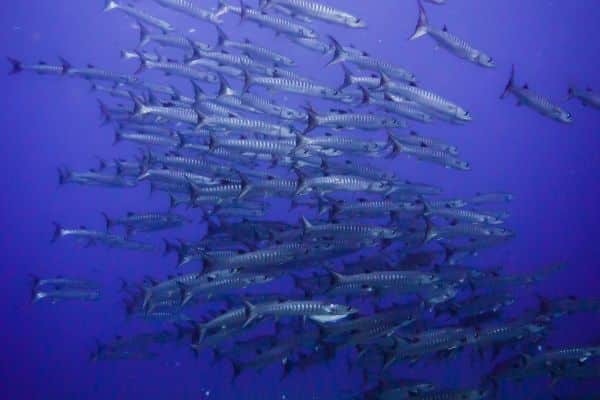
Consider going on a liveaboard diving vacation to Apo Reef for an amazing experience. Liveaboards allow you to fully immerse yourself in this secluded paradise, with many dives available throughout your stay. You’ll get the opportunity to explore several diving sites, see fascinating marine life, and relax in the tranquility of the water.
To go to Apo Reef, fly to Manila and then take a domestic aircraft to San Jose Airport in Occidental Mindoro. You can then organize transportation to Sablayan, the entryway of Apo Reef Natural Park. Boat transfers from Sablayan to the reef take about two to three hours.
Read my full review on MV Resolute’s Coron-Apo Reef-Puerto Galera Liveaboard trip.
If you’re traveling and diving in the Philippines for the first time, make sure to read my posts on
Ultimate Travel and Dive Guide to the Philippines
Philippine Packing List: What to Bring to Your Dive Trip.
Before you start making plans for your trip, it is highly recommended that you verify the weather and diving conditions at your desired destination. Additionally, if you want the most up-to-date information on diving conditions and marine species observations, you may consider speaking with local dive operators or studying particular places.
